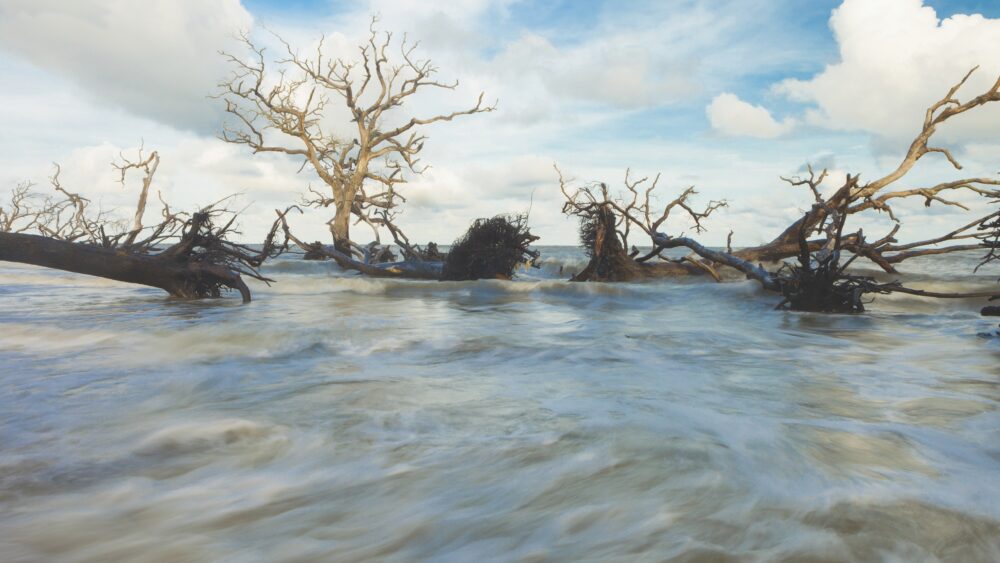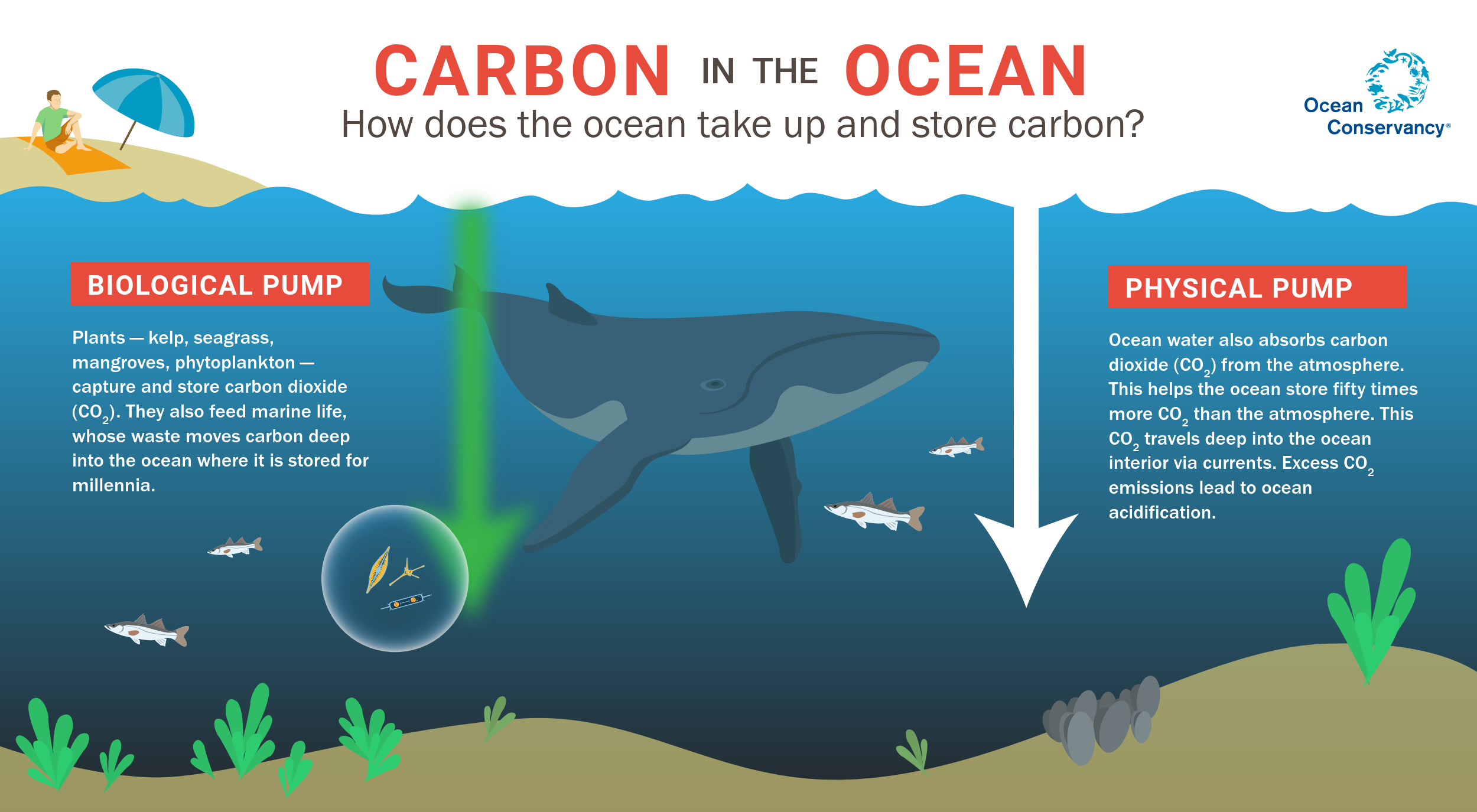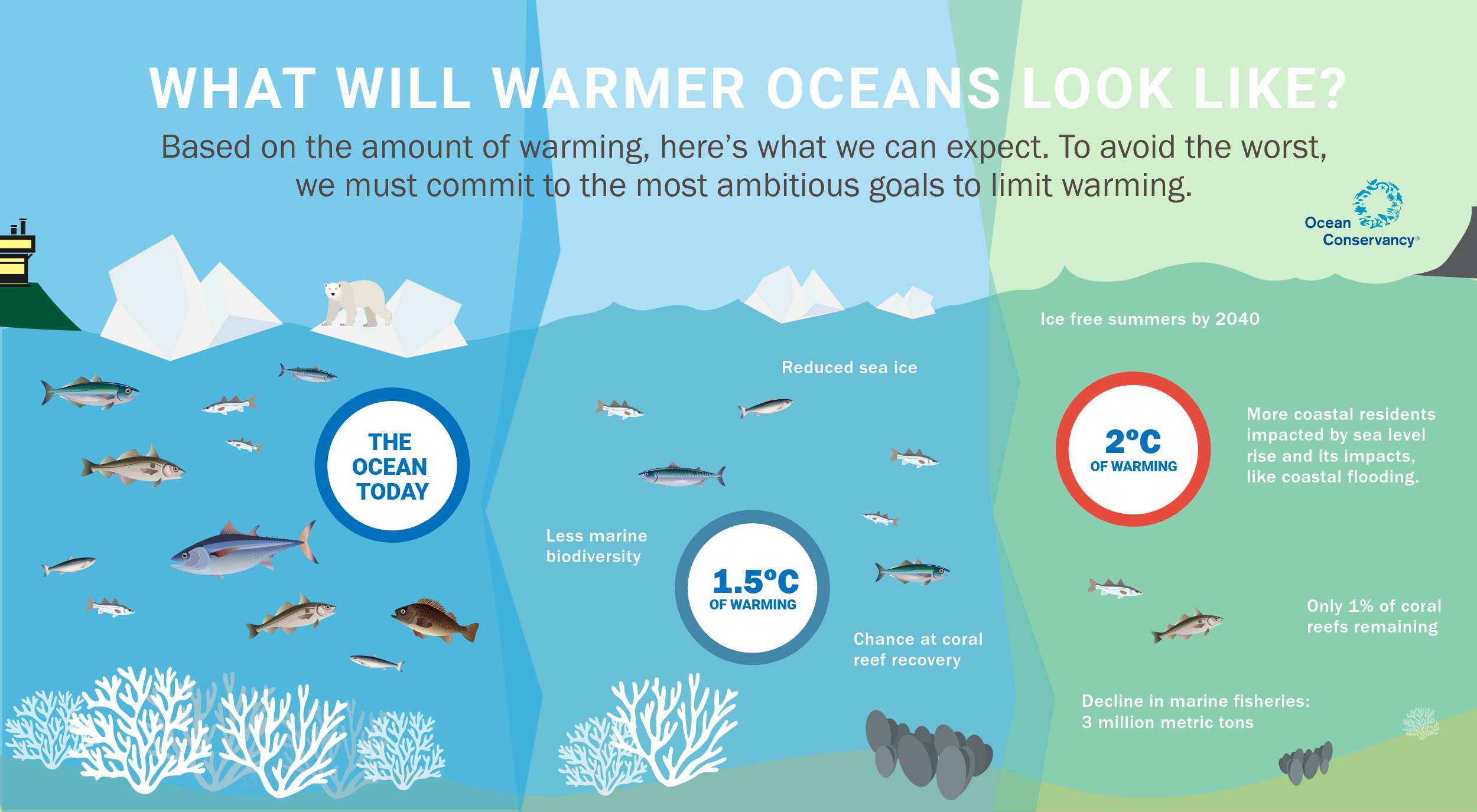71% of our world is covered by ocean. The ocean makes life possible by absorbing carbon dioxide to cool our atmosphere, producing oxygen and providing an invaluable food source. Phytoplankton accounts for over half the oxygen we breathe – we owe our very existence to some of the ocean’s tiniest inhabitants!
On September 24, the Intergovernmental Panel on Climate Change (IPCC) released a special report on the effects of climate change on our oceans and cryosphere (the part of our world made of frozen water). Our oceans are being pushed to their breaking point, and the statistics are unsettling. Before you question if our efforts going forward will make a difference, let us inform you: it’s not too late! Together, we CAN make a difference. We hope we can help you gain an understanding of the climate change impacts you experience every day, so you can learn simple behavior changes that can help lessen these effects.
In the past 50 years, the ocean has worked overtime, soaking up a staggering 90% of all excess heat in the atmosphere. In the last 25 years, the rate of ocean warming has more than doubled, resulting in widespread change in ocean chemistry due to overabsorption of carbon dioxide (also known as ocean acidification), oxygen loss and sea level rise as the cryosphere melts.
If you haven’t seen it on the news, then you’ve probably seen it in your own backyard. South Carolina is already experiencing the many effects of climate change, from the Lowcountry to the upstate. Extreme weather, sea level rise, saltwater intrusion, flooding and erosion impact us more than ever, and it is the communities who are most vulnerable to these impacts that have the lowest capacity to respond.
Wildlife is at the forefront of climate change impact. South Carolina’s coast is host to critical shorebird and seabird rookeries, as well as the largest aggregation of loggerhead sea turtle nesting north of Florida. Rising sea levels lead to diminishing beaches that greatly threaten this critical habitat.
Our local fishermen are feeling the heat as well. As temperatures increase and ocean chemistry is disrupted, the quality and availability of the seafood we love decreases, putting fishermen’s livelihood and our coastal economy in jeopardy. If we lose access to locally sourced seafood, we risk losing a large part of our cultural identity and significantly increasing our carbon footprint as we source seafood from other regions or overseas.
These statistics stress the immediate need for a change in human behavior. Lucky for us, the ocean is resilient – if we all work together to take action now, we can save our planet.
What Can You Do?
Here are some ways you can reduce your carbon footprint, and help lessen the effects of climate change in your community and around the world:
- Drive less; carpool, bike or walk more
- Switch to energy-efficient appliances
- Buy local and support businesses that are supporting the environment
- Add more vegetables to your diet, as they require less energy to grow than meat
- Cut down on the amount of food you waste; shop smart
- Support our local fisherfolk who provide us with seafood sourced from southeast regional fisheries (North Carolina to the east coast of Florida)
- Dine with Good Catch partner restaurants and ask where your seafood is coming from
- Recycle your oyster shells to build new habitats and protect shorelines against erosion
- See if your home is at risk of flooding using our Sea Rise Viewer and plan accordingly
- Contribute your observations of flooding, erosion, saltmarsh impacts and more in the SeaRise Project located in the South Carolina Aquarium Citizen Science app
- Keep storm drains clear of debris
- Create rain gardens and use rain barrels to collect water and prevent flooding
- Use your voice to connect and share your concerns with local, state and federal decision-makers
Learn more about how you can become an everyday conservationist by checking out our “What Can You Do?” card here.




